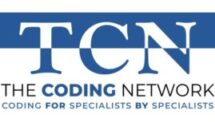Allergy Coding
Allergists perform a host of unique services that require specific knowledge of treatments, procedures, and diagnoses that aren’t seen by other specialists. While allergists share offices with ENTs, there is very little crossover in their coding. An allergy coder needs to be familiar with the complexities of E&M code leveling, plus all the symptoms, testing, and treatments for seasonal pollen allergies as well as drug, food, and skin allergies.
To properly code for an allergist’s services a coder needs to understand the nuances of seasonal allergic rhinitis caused by plant pollens, compared to perennial allergic rhinitis caused by mites, pet hair or dander, or mold. The coder needs to be familiar with the diagnostic skin testing done by providers to assess the patients’ allergies. Allergy coders need to have a firm grasp on the different types of treatments such as immunotherapy, antihistamines, and cromolyn sodium, and the multiple delivery methods that some of these treatments require. There are also complex rules surrounding the differences between direct, general, and personal supervision of non-physician providers. Coding for an allergist presents unique challenges, unfortunately, coding expertise in other specialties doesn’t translate to accurate allergy coding. Finding, hiring, and maintaining a quality Allergy coder who is an expert in all of your immunotherapy, injections, testing and antigens can be challenging and costly.
(Interested in help? Click Here)
Let TCN help you:
